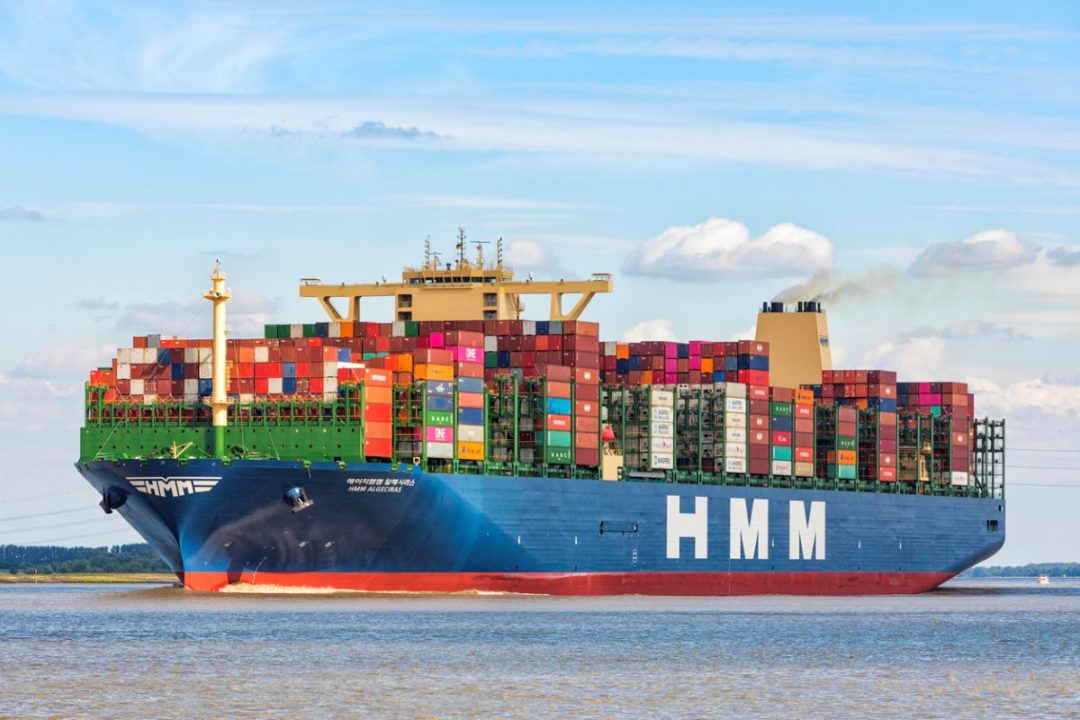
Visit Our Sponsors |
|
|
|
|
|
|
|
|
|
|
|
|
|
|
|
|
|
|
|
|
|
|
|
|
|
|
|
|
|
|
|
|
|
|
|
|
|
|
|
|

Photo: iStock.com/eyewave
The global ocean container trades are in a precarious state. Following a period of seesawing freight rates and persistent service failures, ocean carriers and shippers are struggling to achieve some measure of equilibrium. But a flood of new vessel capacity, scheduled to enter service over the next several years, threatens to throw the whole thing out of whack.
Currently there are just over 6,500 containerships in service around the world, with total capacity of 26.39 million 20-foot equivalent units (TEUs), according to Jan Tiedemann, senior analyst with AXS Marine, parent company of maritime database provider Alphaliner. But in the next two years, vessels on order will add 7.48 million TEUs — an overall capacity increase of nearly 30%. That constitutes “the largest orderbook of containerships in history,” Tiedemann told the TPM 2023 conference in Long Beach, presented by the Journal of Commerce.
Over the years, ocean carriers have introduced progressively larger containerships into the trades linking Europe, Asia and North America. The result has been periods of severe overcapacity, depressing rates and forcing carriers either to cancel sailings or temporarily remove some vessels from service altogether. Now, even as they’re coping with a plunge in rates due to slackening demand for ship space, they’re setting the stage for an even worse imbalance.
Over the last 20 years, the world containership fleet has been growing “almost in a linear fashion,” Tiedemann said. At the same time, the number of major players in the trades has shrunk, to the point where just three carriers — Mediterranean Shipping Co., Maersk Line and CMA CGM — control nearly half the deepsea liner market. And the top 10 carriers command an 85% share.
Oddly, the bulging orderbook is a reflection of optimism by an industry that has long struggled to achieve consistent profitability. “For the first time in decades, carriers finally believe in their business model again,” Tiedemann said, adding that this newfound confidence is driving orders for ships with capacity of up to 24,000 TEUs — the largest ever to ply the oceangoing trades. “The ships are coming,” he said. “They cannot be stopped.”
During the height of the COVID-19 pandemic, carriers scrambled to meet soaring demand for space, as homebound consumers ordered massive amounts of goods over the internet. Carriers shifted vessels into the trans-Pacific trade, only to encounter logjams at Southern California ports. Lengthy delays in the unloading of import containers created the equivalent of a 14% reduction of global capacity, Alan Murphy, founder and chief executive officer of Sea-Intelligence, said at TPM23.
The backlog of vessels has largely been cleared out, although carriers continue to cancel sailings in an attempt to match supply with demand. In 2020, the cancellation rate rose to as high as 50% of individual weekly sailings. At the same time, scheduling essentially went out the window, with 90% of vessels arriving more than a day late in 2021.
Service reliability started to improve in 2022, but has yet to return to pre-pandemic levels, Murphy said. (For carriers, it’s a low bar; their usual service record is just 75% on time.) And the cancellations continue, often with no more than three or four weeks’ notice.
Nevertheless, said Murphy, the cancellations haven’t been sufficient in number to match the drop in demand. And now the situation threatens to worsen — from the carriers’ perspective, at least — with the delivery of bigger ships.
“The only thing that scares me more than shipping liens without money is shipping lines with money,” Murphy said. “They spend money on vessels they don’t need. Maybe they should invest in reliability and customer service. That would be my advice.”
Randy Chen, vice chairman of Wan Hai Lines Ltd., cited unpredictability in the trades as a major reason why carriers haven’t been able to maintain a steady supply of capacity. The situation was especially acute during the height of congestion at the ports, causing more than a doubling of transit times across the Pacific, from 49 to 120 days. “The problem is that the market was vacillating in effective capacity, and we were going up and down as well,” Chen said. And that caused carriers to put even more ships into service.
“To be honest,” Chen said, “We broke the system.”
Now, carriers are approaching something akin to a “normal” market, although Chen acknowledged that a 75% on-time record “is not ideal.” But with port congestion no longer an issue in Southern California (which, indeed, has been steadily losing market share to ports on the East and Gulf coasts), “we should be heading toward predictable capacity.”
A particular sore point with shipper over the last three years was carriers’ failure to accept cargo that was offered under the terms of service contracts. And when carriers did take on the loads, they charged exorbitant rates of up to $10,000 per 40-container from China to the U.S., up from around $1,500 before the pandemic.
With rates plummeting in recent months, the balance of power is now shifting back to shippers, who are likely to “reflect on how they were treated by carriers in 2021 and 2022,” said Bjorn Vang Jensen, executive director for international transport with Cummins, Inc. He suggested, however, that shippers act to improve communication with carriers about their own needs going forward, rather than take revenge for what they see as rate-gouging amid multiple service failures during the height of the pandemic.
With an influx of new tonnage scheduled for this year and next, however, carriers may find that their worst enemy is themselves.
“With demand dropping and ships coming online, shippers are in a much better place going into this contract season,” said Brian Nemeth, chief growth and strategy officer with STG Logistics. “Carriers are going to struggle with maintaining price.”
RELATED CONTENT
RELATED VIDEOS
Timely, incisive articles delivered directly to your inbox.



.jpg?height=100&t=1715228265&width=150)


